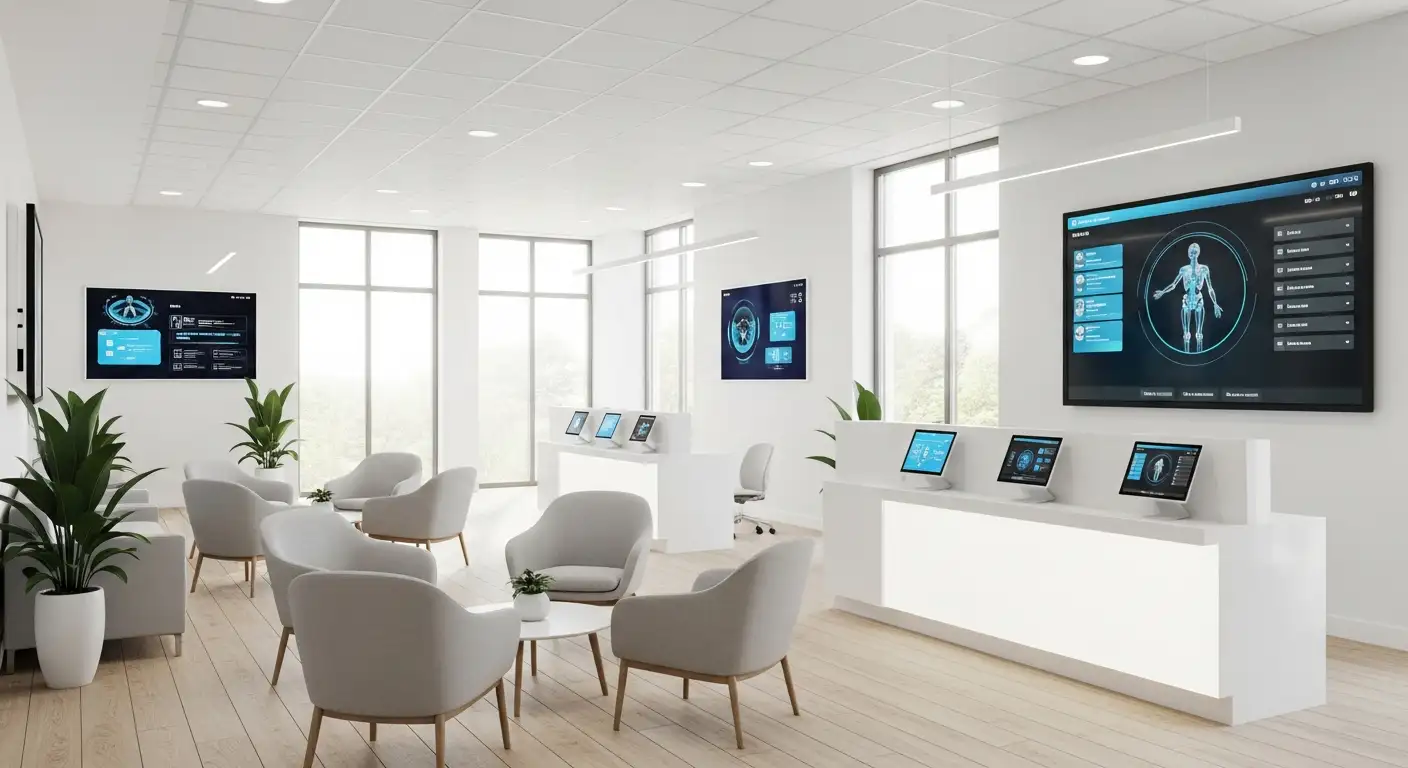How Hybrid Healthcare Supports Ongoing Recovery From Illness or Surgery

The Emergence of Hybrid Healthcare in Post-Illness and Surgical Recovery
Hybrid healthcare, a model combining in-person and virtual medical services, has rapidly evolved into a vital approach for supporting patients recovering from illness or surgery. Accelerated by the COVID-19 pandemic, this integrative framework maximizes flexibility, improves recovery outcomes, and extends care accessibility beyond traditional clinical settings. This article explores how hybrid healthcare supports ongoing recovery, highlighting its technologies, benefits, and future potential within wellness and care programs.
Foundations of Hybrid Healthcare in Recovery Care

What is Hybrid Healthcare?
Hybrid healthcare models combine in-person visits with virtual care to create a flexible, comprehensive approach to patient treatment. This integration allows patients to receive care either at healthcare facilities or remotely using digital tools like video conferencing, remote monitoring devices, and online patient engagement platforms.
How Are In-Person and Virtual Care Integrated?
The hybrid model adapts the healthcare system by blending physical and virtual environments. For example, facilities like Sheba Medical Center in Israel use both physical hospital beds and virtual home beds, depending on the patient’s condition and preferences. Technologies such as remote patient monitoring sensors, portable diagnostics, and telemedicine platforms enable seamless communication and data exchange between patients and healthcare teams.
How Has the COVID-19 Pandemic Impacted Hybrid Healthcare?
The COVID-19 pandemic accelerated telehealth adoption, with usage rates soaring between 60% and 90% in many organizations. This rapid expansion led to the establishment of virtual care centers, like LifeBridge Health's Center for Virtual Care, which offer services ranging from urgent care telemedicine to chronic disease management. Post-pandemic, hybrid healthcare remains crucial for recovery care by offering continuity and reducing hospital readmissions.
What Types of Healthcare Services Are Included in Recovery?
Hybrid recovery services encompass virtual post-discharge support, remote patient monitoring, and tele-nursing programs. For instance, virtual monitoring helps track vital signs and detect early complications during recovery, while telehealth visits provide timely check-ins after hospitalization. These services improve patient engagement and facilitate early specialist interventions, enhancing overall recovery outcomes.
Technology Enabling Continuous Recovery Monitoring
Remote patient monitoring tools
Remote patient monitoring (RPM) plays a crucial role in hybrid healthcare by enabling continuous tracking of patients' health metrics outside hospital settings. Platforms like the Datos Health system collect vital data such as heart rate, blood pressure, and glucose levels, which are then securely shared with healthcare providers to identify early signs of complications or deterioration. RPM effectively supports chronic disease management and post-discharge recovery by facilitating timely interventions.
Wearables and vital sign sensors
Wearable devices, including heart rate monitors, ECG sensors, and portable oxygen monitors, are integral for capturing real-time physiological data. These tools are often paired with home-use kits like the TytoCare Physical Examination kit, which allows patients to perform exams remotely with guidance from clinicians. Such technology reduces the need for frequent in-person visits and enhances patient convenience while maintaining clinical safety.
Virtual visit platforms and software
Secure video conferencing platforms form the backbone of virtual visits, ensuring patients can consult with medical professionals anytime via phone, tablet, or computer. Systems integrated with electronic health records facilitate seamless communication across care teams. Providers utilize specialized telehealth software for urgent care, chronic disease management, and post-discharge follow-ups, streamlining appointment scheduling, documentation, and clinical workflow.
Digital patient engagement tools
Digital engagement features like online scheduling, automated appointment reminders, digital forms, and two-way texting empower patients to take control of their care journey. These tools enhance accessibility and adherence by minimizing barriers such as missed appointments or complex registration processes. Additionally, mobile billing and patient satisfaction surveys help optimize service delivery and patient experience in hybrid care models.
Together, these technologies form an interconnected ecosystem supporting continuous recovery monitoring, improving patient outcomes, and advancing hybrid healthcare's reach and effectiveness.
Benefits of Hybrid Healthcare for Patient Recovery

How does hybrid healthcare improve patient flexibility and convenience?
Hybrid healthcare models blend in-person and virtual care, allowing patients to choose the most suitable method depending on their circumstances. Through virtual visits, patients can access care without the need to travel, which is especially beneficial for those with mobility issues or living in remote areas. Services like LifeBridge Health’s virtual primary care and eVisits provide quick access to treatment for common ailments and non-urgent issues from home, enhancing convenience and reducing barriers to timely care.
In what ways does hybrid healthcare enhance patient engagement and adherence?
Digital patient engagement tools—such as online scheduling, digital forms, and automated reminders—play a crucial role in hybrid healthcare. These features give patients more control over their appointments and treatment plans. Continuous virtual support programs, like the Virtual Medical Weight Loss Program and Virtual Diabetes Management, improve adherence by offering personalized guidance and real-time treatment adjustments. Such ongoing interactions keep patients actively involved in their recovery process.
How does hybrid healthcare help reduce the risk of readmissions?
Post-discharge support combined with remote patient monitoring is vital in preventing hospital readmission. Telehealth appointments and regular digital check-ins help track patient progress after hospitalization. For example, Sheba Medical Center's home hospitalization program, which includes virtual beds equipped with advanced remote monitoring technologies, reported a relatively low 15% readmission rate within 30 days. Early detection of potential complications through continuous monitoring allows for timely interventions, reducing the likelihood of relapse.
How can patients access specialist care remotely through hybrid healthcare?
Hybrid models enable seamless coordination among care teams via electronic health records and virtual consultations. Patients can receive early specialist involvement without physically visiting multiple facilities. Telemedicine platforms facilitate expert advice for chronic disease management, urgent care, and emergency consultations. This remote access ensures timely, specialized care that can positively influence recovery outcomes while decreasing the strain on in-person healthcare resources.
Hybrid Care in Post-Discharge Support Programs
How Do Telehealth Appointments Support Patients After Hospital Discharge?
Telehealth appointments provide vital support to patients once they leave the hospital by facilitating ongoing medical oversight without requiring physical visits. This virtual care allows healthcare providers to check on patient recovery progress, manage medications, address concerns promptly, and adjust treatments in real-time. Such appointments keep patients engaged in their recovery process, ensuring continuity of care during this vulnerable period.
What Role Do Automated Reminders and Follow-Up Care Play?
Automated reminders serve as an essential tool in hybrid post-discharge programs by prompting patients about upcoming appointments, medication schedules, and lifestyle recommendations. These reminders improve adherence to care plans through timely nudges and reduce the risk of missed treatments or check-ins. Continuous follow-up care enabled by virtual platforms ensures patients stay connected with their healthcare teams, enhancing overall recovery outcomes.
How Is Remote Monitoring Utilized for Chronic Conditions Post-Discharge?
Remote Patient Monitoring (RPM) technologies allow patients with chronic illnesses to track vital signs such as blood pressure, glucose levels, or heart rate from home. Data collected through wearables and sensors is shared securely with care teams, enabling early detection of potential issues and timely intervention. This continuous monitoring helps manage chronic conditions and prevents deterioration that might otherwise lead to rehospitalization.
What Impact Does Hybrid Post-Discharge Care Have on Reducing Readmissions?
Implementing hybrid healthcare models in post-discharge settings significantly lowers hospital readmission rates by maintaining seamless communication and care coordination. For example, studies report readmission rates around 15% within 30 days among patients enrolled in home hospitalization programs that combine physical and virtual care. Such programs enhance recovery support, promptly address complications, and empower patients with better self-management tools.
Table: Elements of Hybrid Post-Discharge Support Programs
| Component | Description | Benefit |
|---|---|---|
| Telehealth Appointments | Virtual check-ups and consultations after discharge | Continuous clinical oversight |
| Automated Reminders | Alerts for appointments and medication adherence | Improved patient engagement and compliance |
| Remote Patient Monitoring | Vital sign tracking through devices and apps | Early detection of complications |
| Follow-Up Care Coordination | Integrated communication between patients and care teams | Reduces readmission and erroneous escalations |
By combining in-person recovery protocols with virtual management tools, hybrid care models deliver flexible and effective post-discharge support. This integrated approach not only promotes better patient outcomes but also optimizes healthcare resource use while enhancing patient confidence and safety at home.
Addressing Challenges in Hybrid Care Implementation

Infrastructure Investment Needs
Implementing hybrid healthcare requires substantial investment in infrastructure. Healthcare providers need to procure telehealth platforms, high-speed internet connections, and HIPAA-compliant devices to ensure secure and efficient virtual care delivery. Without these foundational technologies, effective remote monitoring and virtual consultations cannot be reliably conducted.
Staff Training and Workflow Changes
Transitioning to a hybrid model demands comprehensive staff training on new technologies and adjusted workflows. Healthcare professionals must become proficient in video conferencing tools, digital patient engagement systems, and remote monitoring devices. Additionally, organizations need to update protocols—including scheduling modifications, digital check-ins, and criteria for selecting in-person versus virtual care—to support seamless hybrid operations.
Managing Hybrid Workloads
Balancing in-person visits and virtual appointments introduces complex challenges related to scheduling and resource allocation. Providers must carefully coordinate these dual streams of care to avoid overburdening staff. Effective management strategies include adopting flexible workforce planning and prioritizing communication to maintain quality patient care and reduce staff burnout.
Technology Interoperability and Security
A successful hybrid healthcare model hinges on secure, interoperable systems that facilitate real-time data sharing and coordination between in-person and remote care teams. Integrating electronic health records with telehealth platforms ensures continuity of care. Maintaining stringent data security standards, including encryption and compliance with privacy regulations, protects patient information and builds trust in virtual services.
Hybrid Healthcare in Chronic Disease and Wellness Management

How Does Virtual Diabetes Management Improve Patient Care?
Virtual diabetes management offers patients the ability to receive real-time treatment adjustments and personalized advice remotely. Through this service, individuals living with diabetes can communicate with healthcare providers via phone, tablet, or computer. This immediate feedback helps maintain optimal blood sugar levels, preventing complications and improving overall health outcomes.
What Role Do Medical Weight Loss Programs Play in Telehealth?
Medical weight loss programs delivered through telehealth combine nutritional guidance, medication management, and continuous virtual support. Patients benefit from personalized plans that accommodate their lifestyle, facilitated from the comfort of their homes. This approach ensures easier adherence to weight management strategies while allowing healthcare professionals to monitor progress and adjust plans dynamically.
How Is Chronic Disease Monitored Remotely?
Remote patient monitoring (RPM) is a pivotal component of hybrid healthcare for chronic conditions. Patients use devices like sensors and wearable technologies to track vital signs such as blood pressure, glucose levels, and heart activity. Their data is securely shared with healthcare teams who monitor trends and intervene promptly if abnormalities arise. RPM enhances early detection of issues and helps avoid hospitalizations.
What Are the Benefits of Personalized Virtual Care Plans?
Tailored virtual care plans empower patients with conditions like diabetes or obesity by aligning treatments with individual needs and preferences. Benefits include increased patient engagement, convenience, and flexibility. Patients enjoy better control over their health with ongoing virtual support, which fosters adherence and improves quality of life. Additionally, personalized plans contribute to resource optimization by reducing unnecessary in-person visits.
| Program Type | Services Offered | Patient Benefits |
|---|---|---|
| Virtual Diabetes Management | Real-time treatment adjustments, advice | Improved glycemic control, reduced complications |
| Medical Weight Loss via Telehealth | Personalized nutrition, medication, continuous support | Flexible weight management, better adherence |
| Remote Patient Monitoring | Vital signs tracking, data sharing | Early issue detection, reduced hospital visits |
| Personalized Virtual Care Plans | Customized treatment strategies | Increased engagement, convenience, reduced costs |
Expanding Access and Resilience Through Hybrid Care Models

Serving Remote and Underserved Populations
Hybrid healthcare models have proven essential in extending healthcare services to remote and underserved populations. By combining telehealth with traditional in-person care, patients in geographically isolated or resource-limited areas gain better access to primary care, urgent consultations, and specialized management such as virtual diabetes care and medical weight loss programs. LifeBridge Health’s Center for Virtual Care exemplifies this approach by offering virtual health services, enhancing patient flexibility and reducing barriers related to travel or facility availability.
Extending Inpatient Care with Virtual Beds
Innovative inpatient hybrid care strategies incorporate virtual hospital beds alongside physical units to expand capacity and maintain quality care. Sheba Medical Center's Sheba Beyond virtual hospital model uses remote technologies—including vital signs sensors, portable ECGs, and telemedicine platforms—to safely monitor and treat patients at home. Their internal medicine unit design includes 34 physical beds and 12 virtual beds, enabling home hospitalization with an average stay of 3.5 days and a 15% readmission rate, showcasing effective integration of virtual care within inpatient settings.
Early Emergency and Specialist Intervention via Telehealth
Hybrid models facilitate timely specialist input and emergency consultations through telemedicine, improving acute care outcomes and workflow efficiency. Telehealth platforms enable remote consultations during patient transport or in emergency departments, reducing unnecessary ER visits, and supporting rapid decision-making on treatment pathways. This early involvement minimizes delays, helps allocate resources effectively, and mitigates staff burnout through technologies such as tele-nursing and virtual observation.
Improving Healthcare System Resilience
By integrating adaptable physical environments with digital technologies, hybrid healthcare enhances system resilience. It supports diverse care pathways that can adjust to fluctuating demands—as seen during the COVID-19 pandemic—while securing seamless communication and data sharing among care teams. The model’s capacity to coordinate virtual and in-person care leads to better patient engagement, cost reduction, and continuous monitoring post-discharge. Infrastructure investment, staff training, and workflow redesign are critical for embedding this flexibility sustainably in healthcare organizations.
Future Directions: The Promising Horizon for Hybrid Healthcare in Recovery
Ongoing Growth and Adoption Trends
Hybrid healthcare is poised for continued expansion following its rapid adoption during the COVID-19 pandemic. With telehealth usage now widespread—ranging from 60% to 90% among providers—healthcare systems are increasingly integrating virtual and in-person care into cohesive models. This growth is evident across acute care, primary care, urgent care, and behavioral health services, extending beyond large hospitals to smaller practices and underserved areas.
Emerging Remote Monitoring Technologies
The future of hybrid care strongly relies on advanced remote monitoring devices and digital tools. Wearables, smartphone apps, and platforms like Datos Health enable real-time tracking of vital signs and chronic conditions from home. Innovative devices such as the TytoCare Physical Examination kit and portable diagnostic machines empower clinicians to deliver care remotely with diagnostic accuracy similar to traditional visits. These technologies enhance early detection and personalized treatment adjustments.
Regulatory and Cultural Shifts Supporting Hybrid Care
Regulatory changes accelerated by the pandemic have relaxed restrictions on telehealth, fostering widespread adoption and reimbursement. Healthcare organizations are adapting culturally by training staff on new workflows, technology use, and hybrid scheduling strategies. The integration of secure video conferencing and interoperable systems strengthens coordination between care teams, enhancing patient safety and satisfaction.
Long-Term Impact on Healthcare Cost and Patient Experience
By combining the convenience of virtual care with essential physical visits, hybrid healthcare models improve patient engagement and accessibility, particularly for remote or mobility-limited populations. Cost efficiencies arise from reduced hospital readmissions, fewer unnecessary emergency visits, and optimized staff utilization through tele-nursing and remote consultations. Ultimately, the hybrid approach promises to deliver more personalized, flexible, and resilient healthcare while supporting sustainable resource management.
The Lasting Impact of Hybrid Healthcare on Recovery Programs
Hybrid healthcare has emerged as a transformative approach to supporting patient recovery from illness or surgery by seamlessly combining virtual and in-person care. Its capacity to enhance patient engagement, enable continuous monitoring, and personalize treatment plans improves outcomes and reduces healthcare burdens. As technologies advance and healthcare systems adapt, hybrid care is poised to remain a cornerstone of ongoing recovery programs, offering greater accessibility, efficiency, and resilience in patient-centered care.
References
Recent articles
Want to Feel Better and Live Healthier?
Join hundreds of patients taking control of their health with personalized care that fits their life – not the other way around.
Rated 4.8/5 by 32+ customers







